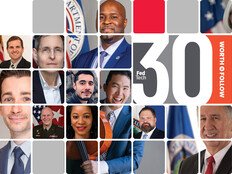The Do's and Don’ts of Federal Social Media
Federal agencies are embracing social media in a big way. Even the Central Intelligence Agency — although slow to join the social networking scene — is now using Twitter and Facebook.
The agency’s first tweet was retweeted more than 300,000 times, and the CIA’s Twitter account has garnered nearly 629,000 followers since its launch last month. Those are record-breaking numbers for any federal agency. But when it comes to measuring digital engagement, what do those numbers tell agencies about their impact?
“Social media digital engagement in government isn’t just PR and marketing or telling people about our programs or telling a story of government programs, it’s reinventing the story itself to make government more efficient, more cost-effective,” said Justin Herman, who leads the federal SocialGov Community of nearly 700 social media practitioners across more than 100 agencies.
Measuring the impact of social media in the public sector is different from other sectors, Herman said during a recent Google Hangout. The event marked two years since the SocialGov program launched, as well as the release of three toolkits aimed at helping agencies improve social media accessibility, measure their performance and develop policies around social media.
There’s even guidance on how to measure sentiments on tools like Google+ and Twitter, based on the positive or negative statements about a federal program or issue or on the primary hashtags associated with those topics. To determine direct engagement with the public, agencies can measure the number of questions they answer through social media or the average time it takes to respond to a request.
The documents are available via Hackpad for open collaboration and public feedback. Several agencies, including the General Services Administration and the Labor and Energy departments, joined forces to create the documents. It’s worth noting some tips from the social media toolkits.
-
Be courteous, honest and respectful. If you’re not careful, social media gaffes can have a negative impact. The Free Application for Federal Student Aid last week apologized via Twitter for “the insensitivity” of a previous tweet about students applying for aid.
-
Do not misuse your federal position on social media for your own gain, and do not endorse any product, service or company. While there are exceptions, you should be careful about giving the appearance of making a government endorsement.
-
Address the roles and responsibilities for managing social media accounts as well as clearance procedures for approving tweets.
-
Make accessibility a priority, and provide alternate access to information posted on social media sites. One way could be linking to a version of your content that’s Section 508 accessible. Agencies should also account for those who speak limited English.
-
An overreliance on hashtags, acronyms and abbreviations can create accessibility issues, said Michael Reardon with the the Labor Department’s Office of Disability Employment Policy. Reardon explained that using a hashtag in the middle of a posting or the end, rather than at the beginning, makes it easier for people with disabilities to understand the post.









